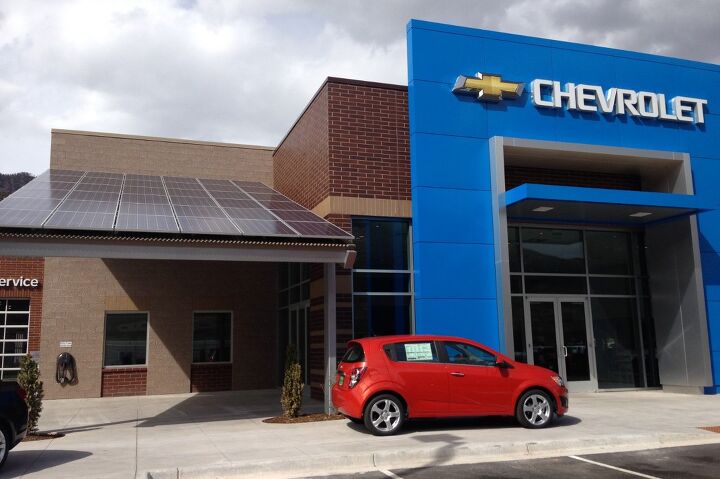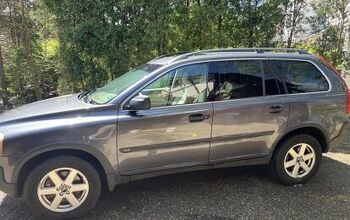2017 U.S. Auto Sales Forecasts Are Falling; Still Likely the Fourth-Best Year on Record
After U.S. sales of new vehicles declined 2 percent, year-over-year, through the first five months of 2017, forecasters surveyed by Bloomberg are largely in agreement. 2017 will fall well short of 2016’s record auto industry output, sliding to 17.2 million sales from more than 17.5 million in 2016.
There are nevertheless a handful of positives on which optimistic automakers can draw. First, a 17-million-unit sales year still represents a huge number of sales for manufacturers that averaged 12.5 million sales between 2008 and 2012.
Second, the high incentive spending doesn’t appear to be growing higher. Pair that with high average transaction prices and automakers can still earn big profits.
Third, if Washington ever does get around to legislating — no sure bet in this investigative congressional age — then promised tax cuts and infrastructure programs could further elevate demand.
In the meantime, there are causes for concern.
Inventory levels, according to Automotive News, improved in May, at least as compared with April, but remain high at General Motors and for many key models across the industry. At some point, in order to clear out, for instance, a 126-day supply of Buick LaCrosse sedans or a 118-day supply of Chevrolet Silverados, pressure will have to be placed on pricing. And when prices fall, competitors are forced to compete in order to maintain market share.
Adding pressure is a forthcoming glut of pre-owned, off-lease vehicles. Part of the boom in auto sales over the last few years is attributed to the rising number of lease customers. The lease returns and other factors are, “driving a lot of uncertainty and frankly the jitters across the industry,” LMC Automotive’s senior vice president of forecasting, Jeff Schuster, told Bloomberg, “because this is the first year and the first time that we’re pulling back on demand since the recession.”
Indeed, not since 2009 has the U.S. auto industry collectively reported fewer sales than in the previous year.
And while incentive spending is relatively stable from one month to the next, automakers are undeniably spending significant sums of money to lure customers into showrooms. ALG said May 2017’s incentive spending was up 9.5 percent, to $3,435, compared with May 2016. Yet average transaction prices were up just 1 percent, year-over-year.
If auto sales do in fact fall to 17.2 million units this year, 2017 will still go down as the fourth-highest-volume year on record. Only 2000, 2015, and 2016 scored higher.
Bloomberg’s forecaster average late last year stood at 17.2 million units, but optimism surrounding GOP tax proposals conspired to increase forecasts for 2017 to 17.4 million early in President Trump’s Oval Office tenure. At Morgan Stanley, meanwhile, the predicted decline in 2017 is just the beginning. The predicted decreases the auto industry will suffer in the following three years will be more substantial.
[Image: General Motors]
Timothy Cain is a contributing analyst at The Truth About Cars and Autofocus.ca and the founder and former editor of GoodCarBadCar.net. Follow on Twitter @timcaincars.
More by Timothy Cain
Latest Car Reviews
Read moreLatest Product Reviews
Read moreRecent Comments
- Larry Bring back the Cadillac luxury, the Cadillac "float" ride suspension and beautiful plush interiors that always separated it from the rest, even Lincoln Town Cars did not measure up. I have an xt4. While a beautiful design, there is no LUXURY, the ride is hard with a stiff suspension, there is a no name poor sounding sound system, ugly cheap wheels and more unflattering features. This 2023 doesn't come close to my old 1980 Fleetwood Broughm or even my 1994 Sedan Deville.
- Arthur Dailey GM could easily have fixed Cadillac while it was still the world's largest automaker. Or when it was a corporation making good profits. Now, not so much. Only large and/or profitable organizations can afford a prestige building, loss leader, 'halo' type of vehicle. With the exception of M-B, Porsche, and now BMW which was not a prestige player until after Cadillac declined, and perhaps Lexus what other prestige marques are profitable? The Escalade is what now defines Cadillac. So it is Escalade vehicles that they should concentrate on. For the market that does not care about MPG, that wants something big, bold, flashy and prefers if their purchases are overpriced because that demonstrates that they have more than enough money.
- Ajla So I guess this means game over for the journos and YouTubers because they spend so much time in new vehicles.
- JMII I mentioned this before but my local Nissan dealer has taken over the nearby shopping mall's parking lot. Frontiers are plentiful.
- Kwik_Shift_Pro4X Making payments on a new car is also killing you.


































Comments
Join the conversation
Dealers/banks are supposedly tightening their lending standards. In the last few years, subprime borrowing/lax lending standards have certainly contributed to higher sales. I know a few people who have purchased new cars in the last 6 months. How they even remotely qualified for a loan is beyond me. I think this is going to have a bigger impact on future sales than people realize.
Either way, we have a good deal of inventory to last for a while. Buy a decent car soon and keep it for a while till we get another boom. Deals are so good right now, it makes even sense to buy new in some case (Hyundai Sonata)